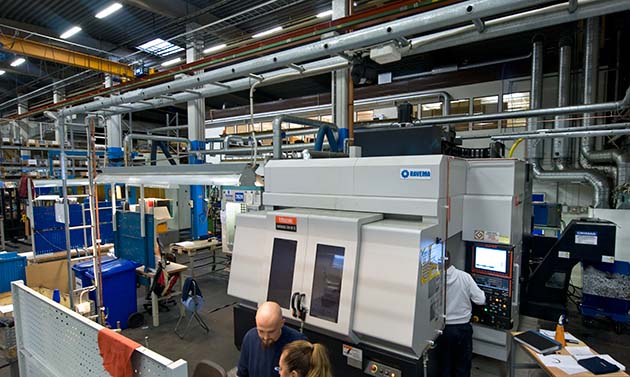Employees at a metalworking company had symptoms of a cold, and they felt better during holidays. When the company got better control of their endotoxin levels, the symptoms disappeared.
I was in contact with an industrial company in central Sweden where several employees often felt frozen and feverish after work. Especially machine operators described how they often felt that they were about to catch a cold, but the problems disappeared the day after and did not occur at all during weekends and holidays. The company suspected that the operators had so called endotoxin fever and began to measure the levels of endotoxin in the metalcutting fluid. One problem was that there are no regulations, so they had to set a limit themselves, and learned at which level the operators got sick.
What is endotoxin?
Endotoxins is found in the cell walls of certain types of bacteria and when the bacteria dies or divides, endotoxin is released in the fluid. When coolant is sprayed against a processed part, small MWF droplets are spread in the air throughout the work area.
How do you know if it's in the air?
Endotoxin can be measured in both the liquid and the air and is measured in the EU/mL or EU/m3. If you breathe in sufficient concentrations, the body perceives it as an infection and that can lead to various forms of defense. One can have, for example, fever, aches and respiratory symptoms similar to the common flu. The symptoms usually occur a few hours after exposure but usually passes during the night.
How to avoid endotoxins?
The best way is to regularly check the quality of the coolant, preferably once a week, and to ensure that the bacteria are kept at a stable low level (<103 CFU/ml). Don’t let the bacteria levels go up and down like a roller coaster. If high bacteria levels are handled by adding biocides it’s important that all staff are informed, because you risk very high endotoxin level when a lot of bacteria die at the same time.
Is there a recommended level?
Very few of the companies we meet are familiar with problems related to endotoxins and even fewer regularly check their levels. It may therefore be difficult to link the symptoms to endotoxin in the workplace. A few years ago the Dutch authorities, The Dutch Expert Committee on Occupational Safety (DECOS) set a recommendation not to exceed 90 EU/m3 averaged over an 8-hour workday. The decision was made after a group of volunteers received exposure to the various endotoxin levels. Read the summary here.
Note: The people in the picture are not those mentioned in the article.
Checklist
We have developed a checklist where you can clearly see if your workplace is safe.



Comment